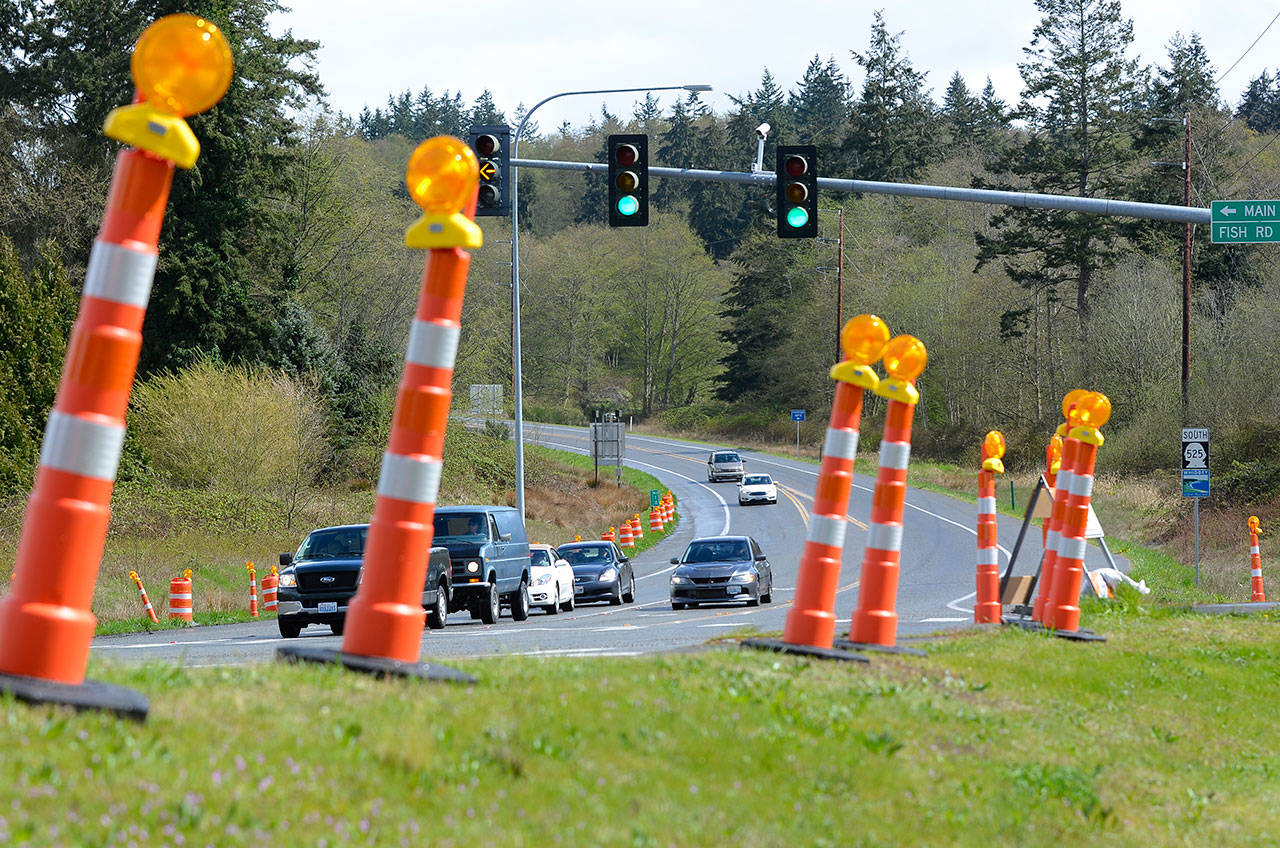Orange traffic cones are up along parts of Highway 525, and so are new light-mounted cameras.
According to the state Department of Transportation, the cameras and cones are part of a $15.4 million paving project that will see new blacktop laid down from Clinton to just north of Coupeville. The cameras will be watching, but not for the reasons some might think.
“They are a way to tell the lights when cars are there so the lights will cycle through,” said Andrea Petrich, an agency spokeswoman.
Department traffic cameras are used for a variety of reasons. Some are recording devices that capture accidents, while others monitor traffic or weather conditions with feeds that can be viewed online; several of the latter are in Clinton on Highway 525 at and around the Clinton Ferry Terminal.
The new cameras won’t do any of those things, Petrich said. The planned road work is extensive, and requires shutting off the pressure switches under the pavement that currently communicates with traffic lights when cars are present. The cameras are an optical alternative, and a temporary one.
“These cameras are only to help the stoplight cycle based on traffic that is waiting, and will come down once the highway is repaved,” she said.
The cameras are being installed at all the highway intersections with lights currently operated by pressure switches. They include: Cultus Bay/Langley, Maxwelton, Bayview Road and Fish roads on South Whidbey, and the intersection of Main Street and Highway 20 in Coupeville.
Preliminary work on the approximately 30-mile project began Sunday. The first phase will see improvements to crosswalks and sidewalks to make sure they are compliant with the American Disabilities Act.
Much of the construction is planned to take place at night between the hours of 7 p.m. and 5 a.m. Also, work is limited to weekdays. The bulk of the project requires little or no rain — laying asphalt — so the start date is weather dependent. Work could be begin during spring but won’t likely start until summer.
“It will be later this summer, probably June/July but it’s going to depend; if spring actually arrives, we may actually be able to get that done sooner,” she said.
The project is scheduled to wrap up this fall.
Road crews won’t just resurface the road, but will grind down and repave.
It will address major cracks, potholes and ruts. Highway 525 and the affected portions of Highway 20 haven’t been paved in about 20 years.
Most of the roadwork will again be performed at night to limit the impact to the motorists. The state believes the new blacktop will be worth the headache.
“We know it will be a little bit of an inconvenience this summer but we also know they [motorists] will enjoy it once the work is done,” Petrich said.
That will be the only planned road work on South Whidbey this year. Bill Oakes, director of Island County Public Works, confirmed that the county won’t be doing any resurfacing on the South End this year. Normally, the department does work across Whidbey and Camano but a recent policy decision aims to refocus efforts on just two areas a year. North Whidbey and Camano are first up.
Concentrating work in specific areas is more efficient, he said. It also made sense to make the change this year because of the state’s major highway project.
“The state will cause enough disruption,” he said.
The county generally resurfaces about 50 miles per year. That will remain the same but areas that do get work will now get about twice as much. He estimated that the 10 to 15 miles done annually on South Whidbey will increase to 20 to 25 miles, he said.



